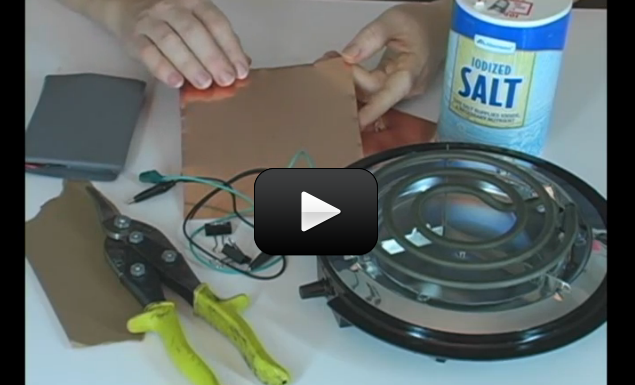This is the kind of energy most people think of when you mention ‘alternative energy’, and for good reason! Without the sun, none of anything you see around you could be here. Plants have known forever how to take the energy and turn it into usable stuff… so why can’t we?
The truth is that we can. While normally it takes factories the size of a city block to make a silicon solar cell, we’ll be making a copper solar cell after a quick trip to the hardware store. We’re going to modify the copper into a form that will allow it to react with sunlight the same way silicon does. The image shown here is the type of copper we’re going to make on the stovetop.
This solar cell is a real battery, and you’ll find that even in a dark room, you’ll be able to measure a tiny amount of current. However, even in bright sunlight, you’d need 80 million of these to light a regular incandescent bulb.
Please login or register to read the rest of this content.


Yes – make more of the cells and then hook them together in series (plus to minus).
is there a way to make it give more elctrisity?
If it’s a solar motor, and you line up about a hundred of these, then yes it might work. Try a lower-amp/volt LED first!
what about to power a small DC motor?
Wow – that’s a great idea! I know you could test your idea by building larger and larger ones – why not start with something the size of a film canister and work your way up to bucket-size and see how it increases? Great idea!
if you use one that is as tall as a one story house, how much do you get, and will it light up an LED, or one as tall as a two story house?
That’s a great question! My initial guess is probably about 12-25, depending on how much current you were able to get out of one solar battery.
how many of these would it take to light up an LED?
That usually happens if you are not logged in. Try again?
I’m getting a message that the video is not found or that access is denied for this video!